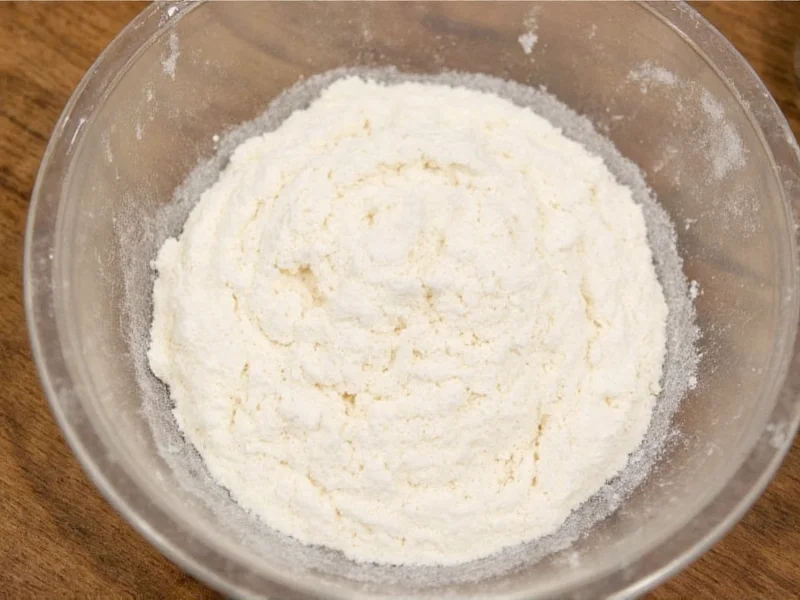When searching for how to thicken soup with corn flour, many home cooks discover this pantry staple offers a reliable solution with distinct characteristics. Understanding the science behind corn flour's thickening properties helps achieve perfect soup consistency every time. Unlike wheat flour, corn flour contains pure starch without gluten, creating a smoother texture without the risk of gumminess.
The Science Behind Corn Flour Thickening
Corn flour thickens through starch gelatinization—a process where starch granules absorb liquid and swell when heated. This occurs at approximately 140°F (60°C), with full thickening achieved at boiling point. The key difference between corn flour vs cornstarch for soup thickening lies in their starch concentration. Corn flour contains about 70-80% starch, while cornstarch is nearly pure starch (90-95%), explaining why you need more corn flour to achieve similar results.
Step-by-Step Thickening Technique
Follow this professional method for using corn flour to thicken soup without lumps:
- Remove ½ cup of soup broth and let cool slightly
- Mix 1-2 tablespoons corn flour per cup of total soup volume with the cooled broth
- Whisk vigorously until completely smooth
- Gradually pour mixture back into main pot while stirring
- Bring to gentle boil for 1-2 minutes to activate thickening
- Remove from heat immediately after desired consistency
This proper technique for thickening soup with corn flour prevents clumping by ensuring even dispersion before exposure to high heat. Never add dry corn flour directly to hot liquid—a common mistake that causes immediate lump formation.
Practical Considerations for Soup Applications
Corn flour works best in heartier soups like chowders, bean soups, and stews where its mild corn flavor complements ingredients. It's less suitable for delicate consommés or clear broths where its opacity would be undesirable. When substituting corn flour for cornstarch in soup recipes, use approximately 1.5 times more corn flour for equivalent thickening power.
Temperature control proves critical—overheating beyond gentle boiling can break down the starch structure, causing thinning. Similarly, acidic ingredients like tomatoes or lemon juice require additional corn flour as acidity interferes with thickening. For thickening cold soups with corn flour, create a slurry and temper it gradually to avoid clumping.
| Thickener | Ratio per Cup Liquid | Texture Result | Flavor Impact | Best Soup Types |
|---|---|---|---|---|
| Corn Flour | 1-2 tbsp | Matte, slightly grainy | Subtle corn flavor | Chowders, bean soups |
| Cornstarch | ½-1 tbsp | Glossy, smooth | Neutral | Cream soups, Asian broths |
| Wheat Flour | 1-2 tbsp | Opaque, heavier | Neutral when cooked | Gravies, cream soups |
| Roux | 2 tbsp fat + 2 tbsp flour | Rich, velvety | Buttery, nutty | Classic French soups |
Troubleshooting Common Issues
Fixing lumpy soup with corn flour requires immediate action. Remove from heat and strain through a fine-mesh sieve while whisking vigorously. For stubborn lumps, use an immersion blender on low setting. If your soup remains too thin after adding corn flour, create additional slurry and repeat the tempering process—never add dry flour directly.
When soup thins out after cooling, this indicates insufficient cooking time. Return to gentle boil for 1-2 minutes to fully activate starch. For corn flour thickened soup that's too thick, gradually add additional broth or water while heating. Remember that soups continue thickening slightly as they cool, so aim for slightly thinner consistency than desired when hot.
Advanced Applications and Alternatives
For gluten-free diets, corn flour provides a reliable thickening solution, though those seeking corn-free alternatives for thickening soup might consider arrowroot or potato starch. When making dairy-based soups, always temper corn flour mixture with cold milk before adding to hot soup to prevent curdling.
Professional chefs often combine corn flour with a small amount of xanthan gum (⅛ teaspoon per quart) for improved stability in freeze-thaw cycles. This professional trick for soup thickening with corn flour prevents separation during storage. For vegan applications, corn flour outperforms egg-based thickeners while maintaining clean flavor profiles.











 浙公网安备
33010002000092号
浙公网安备
33010002000092号 浙B2-20120091-4
浙B2-20120091-4